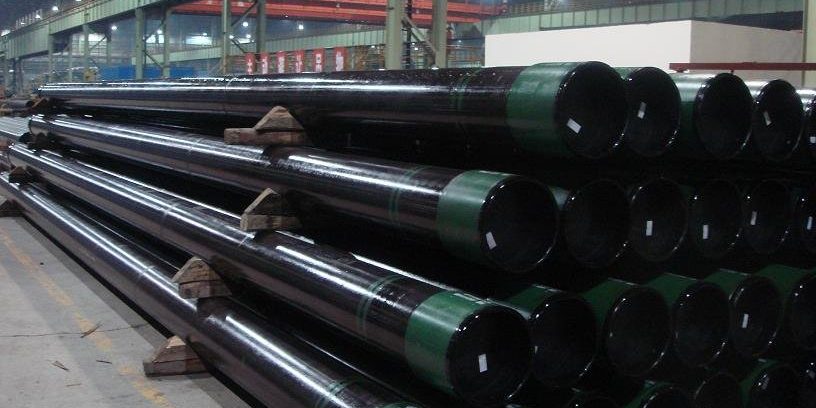Functions
Tubing pipes are used to bring oil and gas from the underground reserves up to the field for further processing.
Tubing pipes need resistance to mechanical stress as they are subject to very high loads and deformations during the production operations.
In addition, tubing pipes sizes should be properly calculated to support the expected oil and gas flow from the ground to the surface (a too small diameter would decrease the production rate and the return on investment on the wellbore licenses, whereas too large tubing would generate non-recoverable costs due to the greater amount of steel used for the bore construction vs. the actual requirement (steel for the casing and tubing pipes).
Sizes and Materials
Tubing pipes are manufactured in seamless and welded execution, in the size range of 1.050 to 5 1/2 inches (consult this article to see the AP5CT tubing pipes sizes) and in the following material grades: H-40, J-55, K-55, N-80, L-80, C-90, T-95, P-110, Q-125 (more details about API 5CT tubing materials are in this article).
End Connections
The main types of connections for tubing pipes are NUE (non-upset), EUE (external upset) and premium. Corrosion resistance under sour service conditions is a very important OCTG characteristic, especially for casing and tubing.
The manufacturing processes of casing and tubing pipes include:
Continuous mandrel-rolling process and the push bench process for sizes between 21 and 178 mm OD.
Plug mill rolling for sizes between 140 and 406 mm OD.
Cross-roll piercing and Pilger rolling for sizes between 250 and 660 mm OD.
These processes typically do not allow the thermomechanical processing customary for the strip and plate products used for welded pipes.
Therefore, the high-strength seamless pipe must be produced by increasing the alloying content in combination with a suitable heat treatment such as quench & tempering.
Meeting the fundamental requirement of a fully martensitic microstructure even at large pipe wall thickness requires good hardenability. Chrome (Cr) and Manganese (Mn) are the main alloying elements used to produce good hardenability in conventional heat-treatable steel.
However, the requirement for good sulfide stress cracking (SSC) resistance limits their use. Mn tends to segregate during continuous casting and can form large MnS inclusions that reduce hydrogen induced cracking (HIC) resistance. Higher levels of Cr can lead to the formation of Cr7C3 precipitates with coarse plate-shaped morphology, which acts as hydrogen collectors and cracks initiators.
Alloying with Molybdenum can overcome the limitations of Mn and Cr alloying. Mo is a much stronger hardener than Mn and Cr, so it can easily recover the effect of a reduced amount of these elements.
Traditionally, OCTG grades were carbon-manganese steels (up to the 55-KSI strength level) or Mo-containing grades up to 0.4% Mo. In recent years, deep well-drilling and reservoirs containing contaminants that cause corrosive attack have created a strong demand for higher strength materials resistant to hydrogen embrittlement and SCC.
Highly tempered martensite is the structure most resistant to SSC at higher strength levels, and 0.75% is the Mo concentration that produces the optimum combination of yield strength and to SSC resistance.







